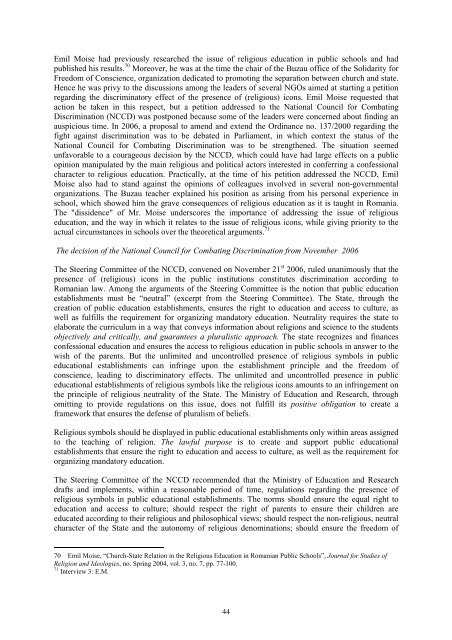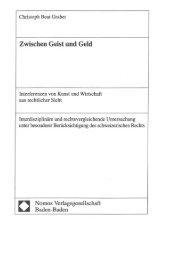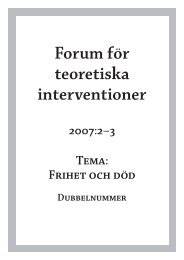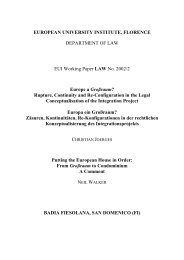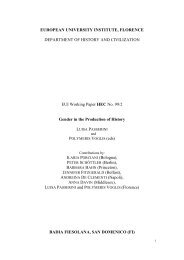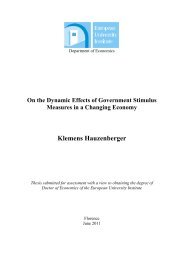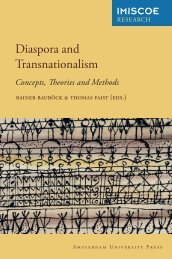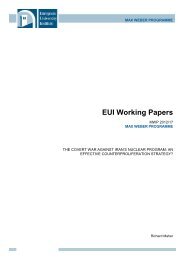Sinziana-Elena Poiana Ioana Lupea Irina-Madalina Doroftei Alina ...
Sinziana-Elena Poiana Ioana Lupea Irina-Madalina Doroftei Alina ...
Sinziana-Elena Poiana Ioana Lupea Irina-Madalina Doroftei Alina ...
Create successful ePaper yourself
Turn your PDF publications into a flip-book with our unique Google optimized e-Paper software.
Emil Moise had previously researched the issue of religious education in public schools and had<br />
published his results. 70 Moreover, he was at the time the chair of the Buzau office of the Solidarity for<br />
Freedom of Conscience, organization dedicated to promoting the separation between church and state.<br />
Hence he was privy to the discussions among the leaders of several NGOs aimed at starting a petition<br />
regarding the discriminatory effect of the presence of (religious) icons. Emil Moise requested that<br />
action be taken in this respect, but a petition addressed to the National Council for Combating<br />
Discrimination (NCCD) was postponed because some of the leaders were concerned about finding an<br />
auspicious time. In 2006, a proposal to amend and extend the Ordinance no. 137/2000 regarding the<br />
fight against discrimination was to be debated in Parliament, in which context the status of the<br />
National Council for Combating Discrimination was to be strengthened. The situation seemed<br />
unfavorable to a courageous decision by the NCCD, which could have had large effects on a public<br />
opinion manipulated by the main religious and political actors interested in conferring a confessional<br />
character to religious education. Practically, at the time of his petition addressed the NCCD, Emil<br />
Moise also had to stand against the opinions of colleagues involved in several non-governmental<br />
organizations. The Buzau teacher explained his position as arising from his personal experience in<br />
school, which showed him the grave consequences of religious education as it is taught in Romania.<br />
The "dissidence" of Mr. Moise underscores the importance of addressing the issue of religious<br />
education, and the way in which it relates to the issue of religious icons, while giving priority to the<br />
actual circumstances in schools over the theoretical arguments. 71<br />
The decision of the National Council for Combating Discrimination from November 2006<br />
The Steering Committee of the NCCD, convened on November 21 st 2006, ruled unanimously that the<br />
presence of (religious) icons in the public institutions constitutes discrimination according to<br />
Romanian law. Among the arguments of the Steering Committee is the notion that public education<br />
establishments must be “neutral” (excerpt from the Steering Committee). The State, through the<br />
creation of public education establishments, ensures the right to education and access to culture, as<br />
well as fulfills the requirement for organizing mandatory education. Neutrality requires the state to<br />
elaborate the curriculum in a way that conveys information about religions and science to the students<br />
objectively and critically, and guarantees a pluralistic approach. The state recognizes and finances<br />
confessional education and ensures the access to religious education in public schools in answer to the<br />
wish of the parents. But the unlimited and uncontrolled presence of religious symbols in public<br />
educational establishments can infringe upon the establishment principle and the freedom of<br />
conscience, leading to discriminatory effects. The unlimited and uncontrolled presence in public<br />
educational establishments of religious symbols like the religious icons amounts to an infringement on<br />
the principle of religious neutrality of the State. The Ministry of Education and Research, through<br />
omitting to provide regulations on this issue, does not fulfill its positive obligation to create a<br />
framework that ensures the defense of pluralism of beliefs.<br />
Religious symbols should be displayed in public educational establishments only within areas assigned<br />
to the teaching of religion. The lawful purpose is to create and support public educational<br />
establishments that ensure the right to education and access to culture, as well as the requirement for<br />
organizing mandatory education.<br />
The Steering Committee of the NCCD recommended that the Ministry of Education and Research<br />
drafts and implements, within a reasonable period of time, regulations regarding the presence of<br />
religious symbols in public educational establishments. The norms should ensure the equal right to<br />
education and access to culture; should respect the right of parents to ensure their children are<br />
educated according to their religious and philosophical views; should respect the non-religious, neutral<br />
character of the State and the autonomy of religious denominations; should ensure the freedom of<br />
70 Emil Moise, “Church-State Relation in the Religious Education in Romanian Public Schools”, Journal for Studies of<br />
Religion and Ideologies, no. Spring 2004, vol. 3, no. 7, pp. 77-100.<br />
71 Interview 3: E.M.<br />
44


